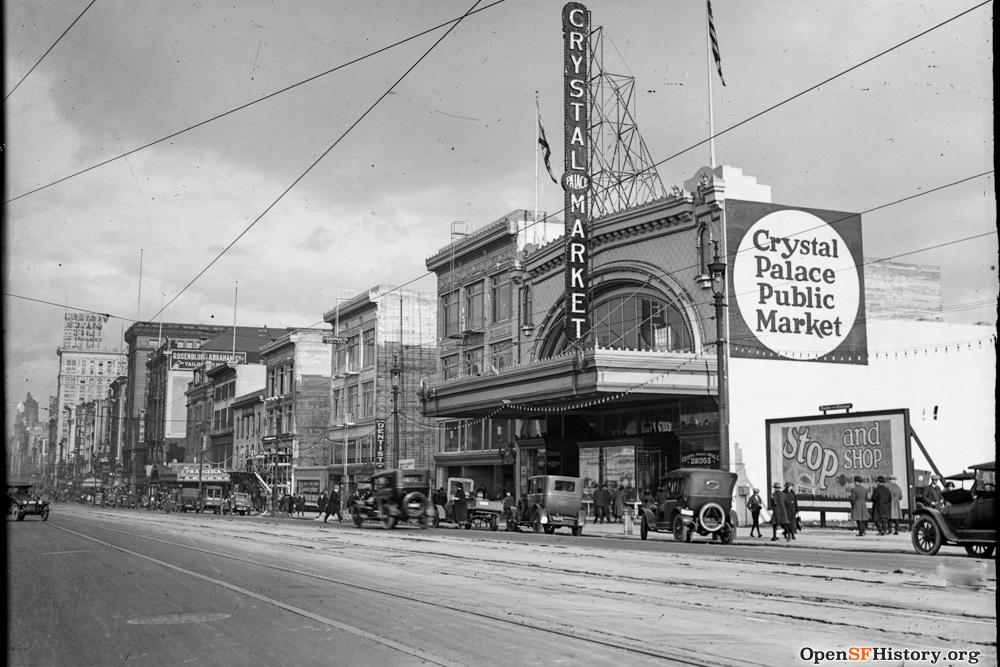The closure of a troubled Whole Foods in Downtown San Francisco has made national news. But while that upscale supermarket had been hawking 365 brand organic pearled couscous for only the past year, the location was once home to a 20th century marketplace so vast, it had its own dedicated Muni service.
Opening exactly 100 years ago, in 1923, the Crystal Palace Market operated at the southwest corner of Market and Eighth streets, where Trinity Place and the doomed Whole Foods are now. It was named for the signature building at the very first world’s fair, London’s Great Exhibition of 1851—a bit like San Francisco’s own 1915 Panama-Pacific International Exhibition—and like its namesake, it has long since been demolished.
“The Palace was an emporium dedicated to the palates of the cosmos,” San Francisco author Gus Lee wrote in his 1991 memoir, China Boy. “It probably had food from Saturn. It was the FAO Schwarz of the stomach.”
For 36 years, the 71,000-square-foot—or one-and-a-half acre—Crystal Palace Market and its 65 shops operated as a sort of midcentury mega-mall, drawing shoppers from across Northern California. It had numerous meat and vegetable stands, a pet shop, a record store, check-cashing services, a feed store, a beauty shop, an Anchor Steam beer stand and a kiosk dedicated entirely to honey, as well as a fortuneteller and—allegedly—a “Horseradish Man” whose red, irritated eyes attracted curious children.
Historical images at OpenSFHistory reveal a building that looks more like a theatrical venue than an early version of Costco, with gaudy ads and a vertical, neon-lit blade sign. Although the barrel-roofed, glass-ceilinged building had a massive parking lot immediately adjacent, FoundSF states that it also had its own transit line.
“For 5 cents, shoppers could arrive via the Municipal Railway’s Shoppers Special shuttle that traveled down Market from Second Street,” FoundSF states, referring to a predecessor of today’s Muni from the era before BART and Muni Metro lines tunneled beneath Market Street.
Reached for comment by The Standard, a San Francisco Municipal Transportation Agency confirmed this.
Prior to the Crystal Palace, the site had been the Mechanics Institute Pavilion, before it moved to its current home at 57 Post St. It was later briefly a baseball stadium called Central Park where teams in the California Baseball League competed, until the 1906 earthquake and fire destroyed it. A vacant lot for the next 16 years, it hosted Ringling Brothers and other circuses and carnivals that came through town.
The Crystal Palace itself endured until Aug. 1, 1959, only four years before the magnificent Fox Theatre one block up Market Street was torn down to build today’s Brutalist and widely reviled Fox Plaza mid-rise. These twin demolitions meant equally ignoble ends for two of Downtown San Francisco’s most incredible historical buildings.
